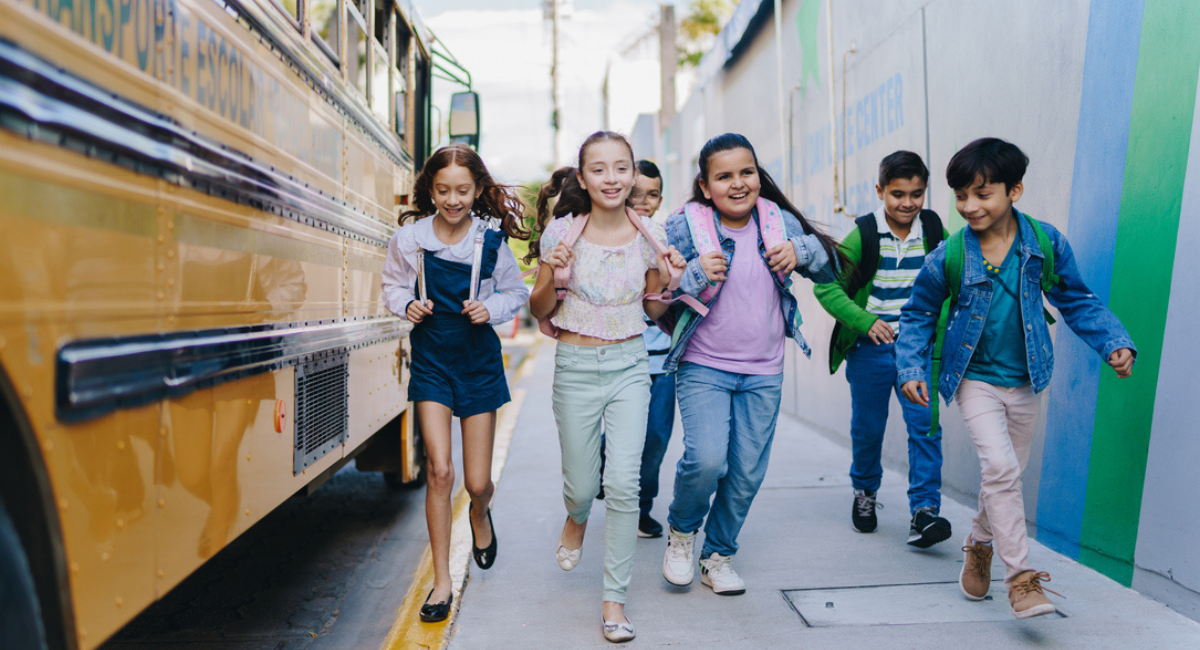According to the Research Institute of America, e-learning can help students retain between 25%-60% more information. More and more schools are embracing the prospect of online learning, with over 332,379 U.S. K-12 public school students enrolled in a fully virtual school during the 2019-2020 school year. An additional 152,530 students were enrolled in blended schools.
For all the potential benefits, virtual and hybrid learning environments don’t come without their own set of challenges—primarily in keeping students engaged. These non-traditional schools are still in their infancy, and without the proper structures and support in place to augment what is missed from a physical classroom, they face the risk of students falling behind.
This article will outline several different strategies educators can use to maintain student engagement online.
Boosting Student Engagement with Interactive Learning
In any classroom setting—and especially non-traditional ones—the course material won’t stick unless students are actively engaging with it. Educators can achieve active engagement through methods that allow student conversation, reflection, and collaboration.
The Minute Paper
The ‘minute paper’ is an effective way to quickly gauge student understanding at key checkpoints throughout a lesson. Students are given a prompt and have less than five minutes to answer it based on what they’ve learned thus far. This activity helps students reflect in the moment and allows teachers to fill knowledge gaps on the spot or at the start of the next class.
Think-Pair-Share
A more collaborative and time-intensive method of fostering student engagement, think-pair-share encourages students to reflect on class material in three steps:
- Think. Students are given time to think about a prompt individually—similar to the minute paper.
- Pair. Students are organized into virtual breakout rooms to discuss their findings with one another.
- Share. All students return from their breakout groups and present their shared thoughts and findings to the class.
The three levels of reflection help students articulate their thoughts and consider a variety of perspectives.
Flipped Classroom Model
This method flips the traditional cadence of classroom instruction to homework on its head. Students start by watching their instructor’s lesson asynchronously through recorded videos and online activities. This process frees up live class sessions for more discussion on the topics students have already been engaging with asynchronously. With a flipped classroom model, teachers can clarify concepts in a more targeted way and use more classroom time to assist students in areas where they may be struggling.
Spider Web Discussion
Similar to the flipped classroom model, spider web discussion starts with students answering questions independently before a live classroom session. Once in class, students share their answers while the instructor documents them, drawing lines of correlation between different responses that effectively form a “spider web” by the end of the session. This visual representation of the discussion allows students to reflect on what they learned from their peers, and how ideas can relate, and build on each other.
Microlearning
While microlearning as a medium might involve short video snippets, games, and reading material, the overall concept is a method for increasing knowledge retention quicker. By breaking large, complex concepts into short, focused, and digestible modules, students can better maintain their attention and remember what is being taught. These shorter pieces of learning material are also easier for students to revisit and quickly freshen up on forgotten concepts.
Leveraging Technology to Fill in the Gaps
Technology can enhance learning by making it interactive and responsive in several ways.
Built-in Chat Features
While you can use all manner of innovative EdTech platforms to increase student engagement, don’t underestimate the simple features of tech you’re already using. Whether it’s Zoom, Google Meet, or Microsoft Teams, all video conferencing software has a chat feature. With a minimal structure and best practices in place, the chat feature can be a valuable tool for assessing student engagement and understanding. Students could simply react to what is being taught with emojis that confirm their understanding, indicate the need for further explanation, or simply communicate their feelings on a topic. Chat features also enable quick responses to questions, allowing even students who are less comfortable communicating verbally to engage with the lesson material.
Gamification
Gamification tools like Kahoot!, Quizlet, and Gimkit are effective ways to break up classroom time and reframe how students interact with course material. With quizzes, flashcards, and other formats that incorporate game elements like points, rewards, and competition, you can turn learning into a fun activity that encourages student engagement.
Interactive Videos
In a digitally native world where video is the medium of choice, leveraging it in classrooms can be a constructive way to bolster student engagement. Video platforms like Echo360, Kaltura, and Panopto come with LMS compatibility and make it easy for educators to transform their video lectures into interactive learning experiences with embedded quizzes, closed captioning, and timestamped digital notes.
Providing Social-Emotional and Personalized Support
Without close proximity to their teachers and peers, student engagement in hybrid and virtual learning environments hinges on strong support structures that meet their needs in alternative ways.
Establishing Dedicated and On-Demand Check-ins
Self-direction is inherent in any asynchronous learning environment, but setting up regular check-ins with students to assess progress, provide direction, and lay out expectations will help them feel more supported and assured in their time away from live class sessions.
That said, students are going to encounter challenges in their asynchronous work. Providing them with access to resources and the ability to connect with their teachers or peers at any time can go a long way in preventing them from feeling lost or unsupported.
Meeting Social-Emotional (SEL) Needs
Beyond academic needs, students in hybrid and virtual learning environments may miss out on many of the social skills and sense of belonging that come with participation in clubs, sports, and “home rooms” offered in physical schools. Providing students with opportunities to participate in online clubs, group projects, and dedicated check-ins with a mentor for their social-emotional needs are essential factors in their ability to thrive.
Measuring Student Engagement with Data-Based Insights
Leveraging LMS and SIS data is key to educators finding empirical insights on student engagement with their course material. By collecting log data on student activity and time spent on various resources, educators can identify patterns that will help them make adjustments to their instruction and personalization considerations for each student.
Empowering Student Engagement with School Pathways
School Pathways’ Student Information System and Personalized Learning System are tailor-made for non-traditional schools. We’ve spent over 20 years with educators to overcome the unique challenges that come with hybrid and virtual learning environments, ensuring that our products provide them with the plans, content, tools, and data they need to create successful student outcomes.
If you’re ready to boost student engagement in your school, schedule a demo with us. We’re happy to discuss how we can meet your needs.





